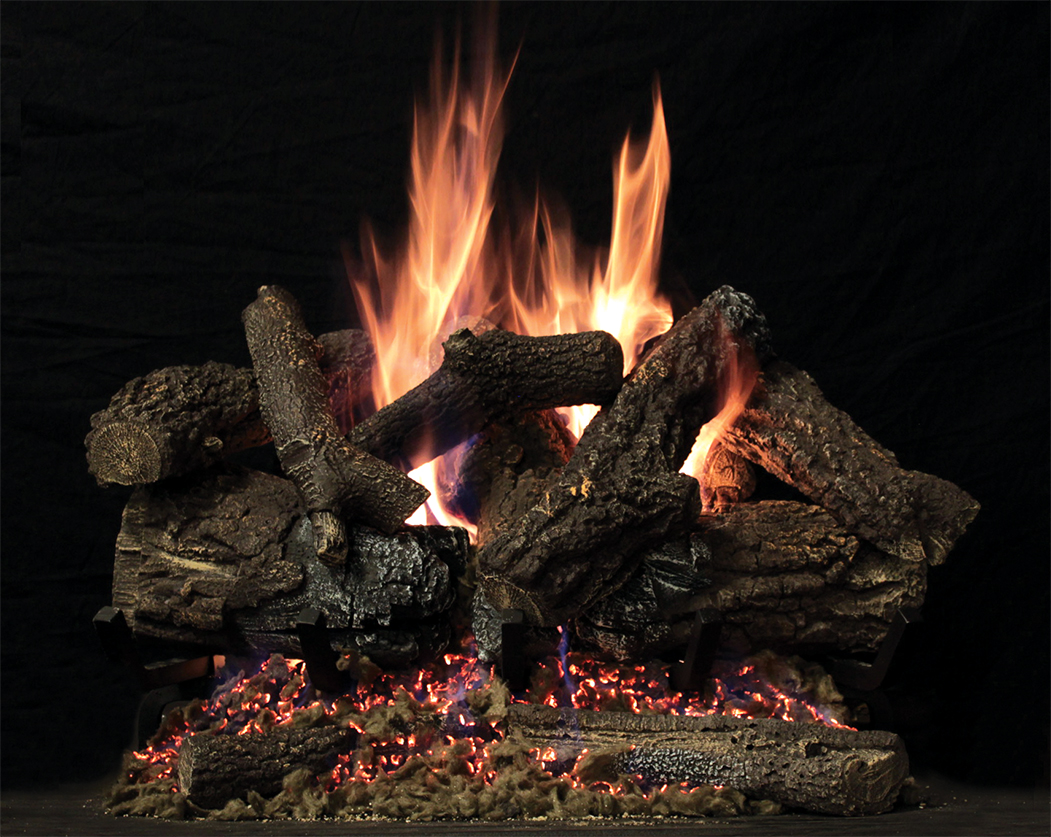Gas
Logs
Gas logs are available for vented and vent free applications. Vented gas logs by design have a realistic flame presentation. They have a higher BTU input (gas volume) than vent free logs, which provides a stronger flame. Because the combustion is released through a vented flue system, the flames can wrap around the logs in a more realistic pattern. Ventless gas fireplace logs are approved to burn without a venting system. This technology by design is a high efficiency heating product for your unit. For easier use, download the form below and bring it in store to shop with a customized experience.

Our gas logs offer a range of options to enhance your fireplace experience, whether you’re looking for vented logs’ aesthetic appeal or ventless logs’ efficiency. We provide high-quality products from leading manufacturers, ensuring both safety and style in your home.
Vented logs have been a traditional choice for installation in wood-burning fireplaces. They are available in various sizes, with the most common being 18″, 24″, and 30″. A 42″ fireplace opening typically uses a 24″ log set. While vented logs are aesthetically appealing, they are relatively inefficient. Vented logs can be installed in natural or liquid propane (LP) gas applications. A standing pilot flame is required for LP gas but is optional for natural gas. It’s important to keep glass fireplace doors open when burning vented logs.
Ventless gas logs are known for their high efficiency, with a 99.9% efficiency rating, making them the cleanest burning technology available. All vent-free logs include an oxygen depletion sensor for safety. Since combustion particles are distributed back into the room, glass doors must be completely open when burning vent-free logs. These logs are available in sizes ranging from 18″ to 30″, with the most common sizes being 18″ and 24″. They are compatible with both natural and liquid propane (LP) gas. A battery-operated remote is available for both a standing pilot flame and an intermittent pilot ignition (IPI) system.
Installing gas logs in your fireplace can be a great way to enjoy the ambiance of a fire without the hassle of traditional wood-burning. Here are some pros and cons to consider:
Installing vent-free gas logs in your fireplace can be a convenient and efficient option, but it’s important to weigh the pros and cons: